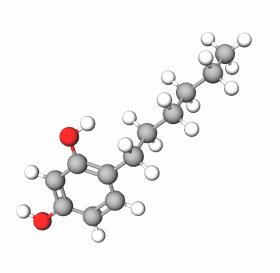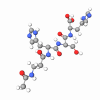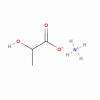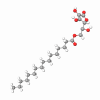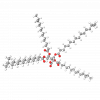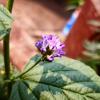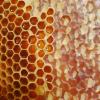Hexylresorcinol (chemical name 4-hexylresorcinol) has several beneficial properties for the skin thus being used in skincare formulations as an antiseptic, local anesthetic, and regeneration booster. It shows notable antimicrobial activity and increases the shelf-life of products.
Thanks to the tyrosinase inhibition effect, Hexylresorcinol reduces melanin synthesis, makes the skin lighter, and evens the tone. In addition, it stimulates growth factors, speeding up cell renewal, wound healing, and enhancing angiogenesis and microcirculation.
Skin protective property
Melanin production is an oxygen-dependent process that acts as a potential source of reactive oxygen species (ROS) inside pigment-forming cells melanocytes. Glutathione protects cells from oxidative injury due to its antioxidant property and also inhibits melanin synthesis.
Hexylresorcinol increases Glutathione levels by stimulating its recovering enzymes (Glutathione reductase and Glutathione peroxidase) additionally boosting skin's protective mechanisms against UV exposure.Hexylresorcinol compared with other skin-whitening ingredients
The results of studies demonstrate that HR has excellent inhibitory activity against tyrosinase using both substrates (DOPA and tyrosine).
- Licorice extract shows good inhibitory activity as well but it is a plant extract; hence consistency could be a problem. The intense yellow color of licorice makes it difficult to make aesthetically pleasing formulations.
- Kojic acid is also effective but is known to be mutagenic and causes contact dermatitis and erythema on long-term use.
- Hydroquinone showed good inhibitory activity when tyrosine was used as a substrate but is less effective with DOPA. Hydroquinone suffers from toxicity problems and its use is banned in many countries.
In addition, HR has excellent inhibitory activity against peroxidase followed by kojic acid and hydroquinone, whereas licorice is the least effective.
Is Hexylresorcinol safe for skin?
Hexylresorcinol has a GRAS (Generally Recognized As Safe) status and has a long history of human use as a topical skin and mucosal disinfectant for the treatment of superficial wounds, and as a component of soaps, hand washes, and skin cleaners. HR is considered to be safe and effective for use in throat lozenges and as an anti-browning agent. It is included in the pharmacopeias of Australia, the US, the UK, Finland, the Netherlands, and Ireland for its use as an antiseptic.
European Commission, Health & Consumer Protection Directorate-General, considers 4-hexylresorcinol as toxicologically acceptable for the prevention of melanosis in shrimps. In order to determine the safety profile of highly pure HR for topical use, Sytheon has carried out human repeat insult patches (HRIPT) and skin scarification tests.
HRIPT (1%, 2% & 5% in corn oil, total subjects 240) demonstrates it to be a non-primary irritant and a non-primary sensitizer. Skin-irritating propensities using 0.1% and 0.5% levels on scarified human skin also showed it to have a low irritating potential and the data compare well with saline control.
